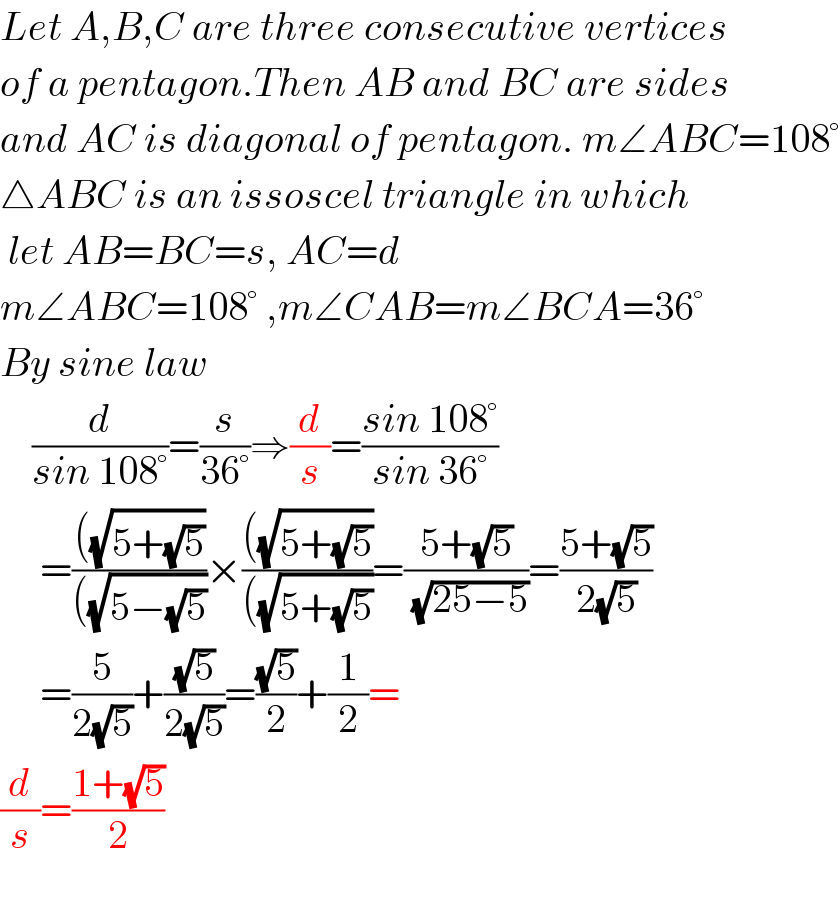
Question and Answers Forum
Question Number 3584 by prakash jain last updated on 16/Dec/15
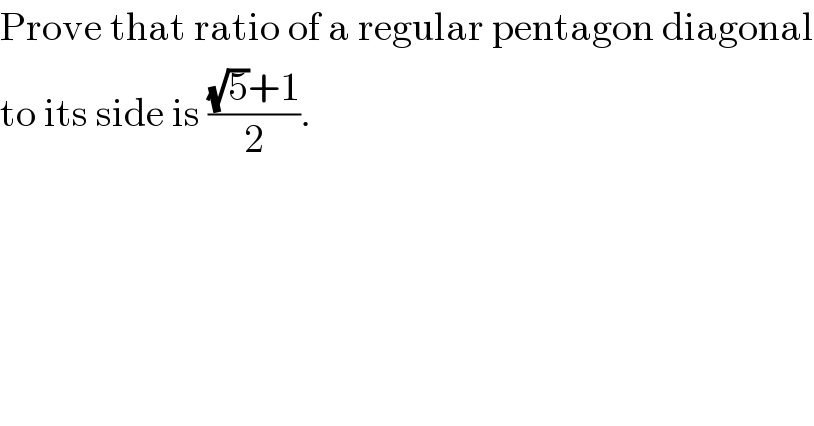
Commented by Yozzii last updated on 15/Dec/15
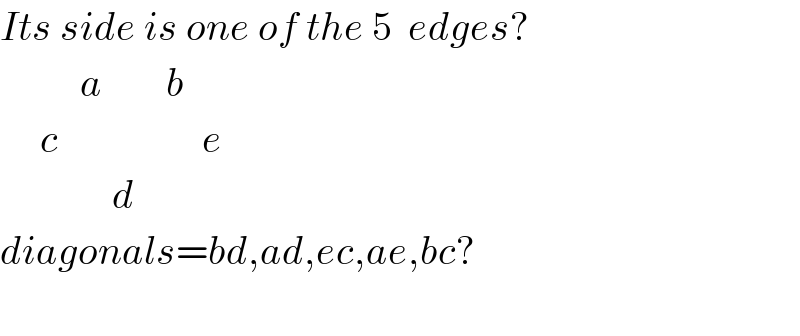
Commented by prakash jain last updated on 15/Dec/15

Commented by Yozzii last updated on 16/Dec/15

Commented by prakash jain last updated on 16/Dec/15

Commented by Rasheed Soomro last updated on 16/Dec/15
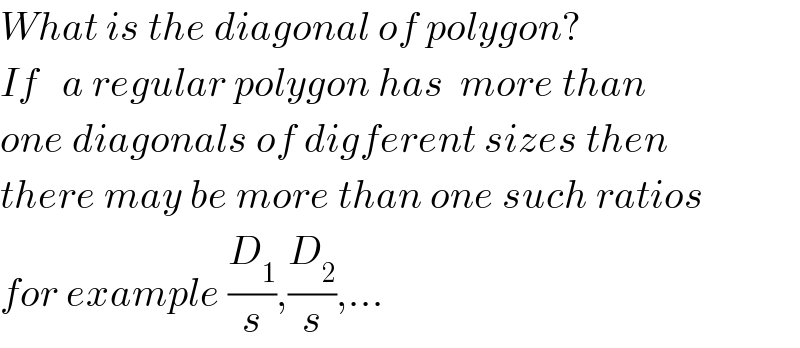
Commented by prakash jain last updated on 16/Dec/15

Answered by Yozzii last updated on 16/Dec/15

Commented by Yozzii last updated on 16/Dec/15
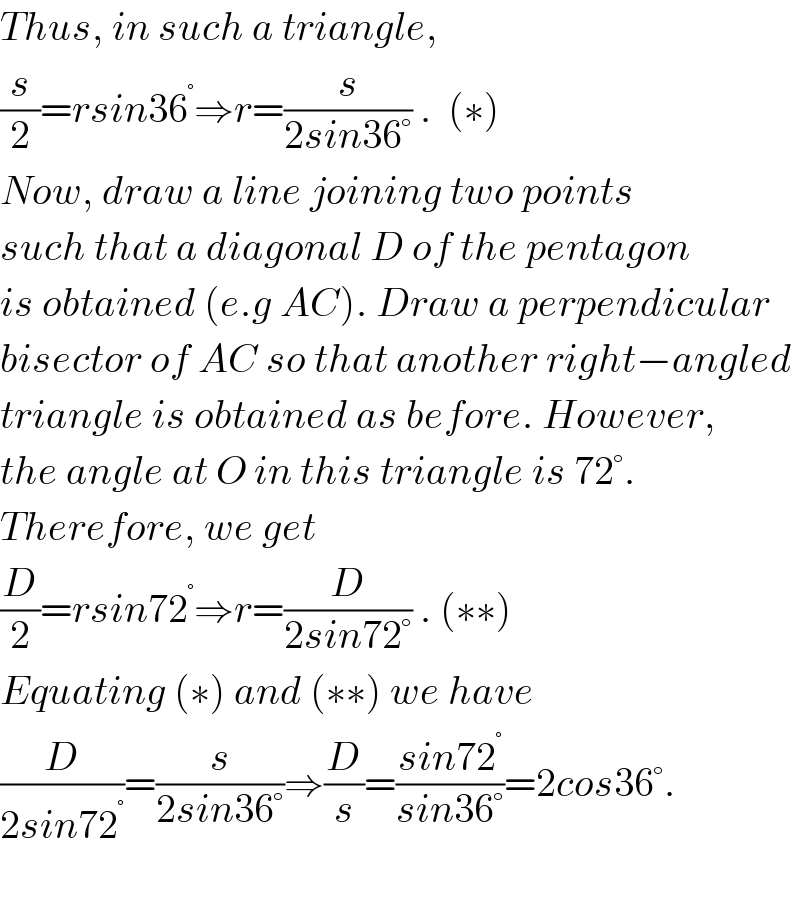
Commented by Yozzii last updated on 16/Dec/15
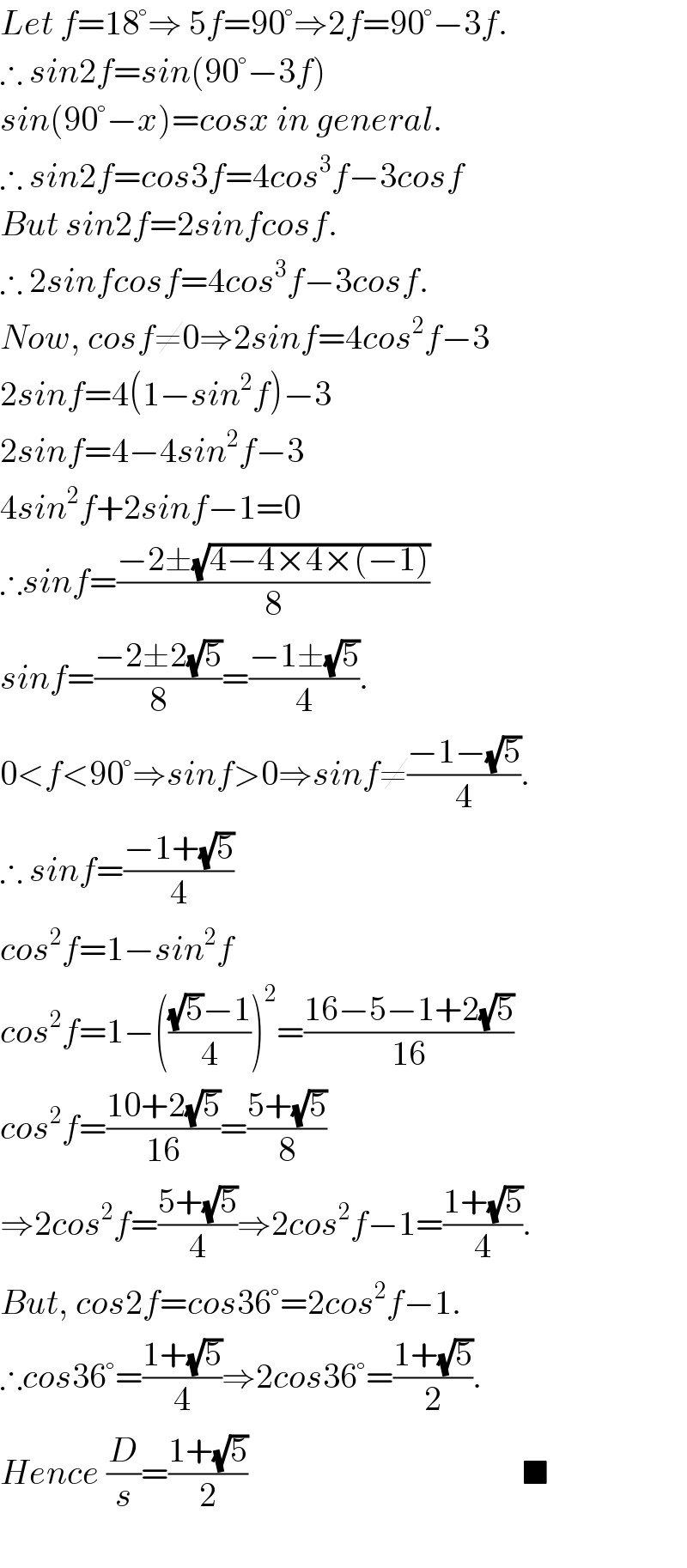
Answered by Rasheed Soomro last updated on 16/Dec/15
![Let A,B,C are any three consecutive vertics, then AB^(−) ,BC^(−) are sides of pentagon and AC^(−) is its diagonal Now let mAB^(−) =mBC^(−) =s and mAC^(−) =d We have to prove d:s=(((√5)+1)/2):1 or (d/s)=(((√5)+1)/2) We know that m∠ABC=108° By cosine law d=(√(s^2 +s^2 −2(s)(s) cos 108°)) (d/s)=((√(s^2 +s^2 −2(s)(s) cos 108°))/s) =((s(√(2−2cos 108°)))/s)=(√(2−2cos 108°)) =(√(2−2(((1−(√5))/4))))=(√((8−2+2(√5))/4)) =((√(6+2(√5)))/2) Now we have to change the numerator into a+b(√5) form,where a ,b are rationals So let (√(6+2(√5))) =a+b(√5) 6+2(√5)=(a+b(√5))^2 =a^2 +5b^2 +2ab(√5) a^2 +5b^2 =6 ∧ 2ab=2⇒a=(1/b) a^2 +5b^2 =6⇒((1/b))^2 +5b^2 =6 ⇒1+5b^4 =6b^2 ⇒5b^4 −6b^2 +1=0 ⇒b^2 =((6±(√(36−20)))/(10))=((6±4)/(10))=1,(1/5) ⇒b=±1,±(1/(√5)) [discarding as its irrational] b=±1⇒a=±1 a+b(√5)=1+(√5),1−(√5),−1+(√5),−1−(√5) Last three are extraneous(?) ((√(6+2(√5)))/2)=((1+(√5))/2)](Q3592.png)
Commented by prakash jain last updated on 16/Dec/15

Commented by Rasheed Soomro last updated on 16/Dec/15

Answered by Rasheed Soomro last updated on 16/Dec/15
